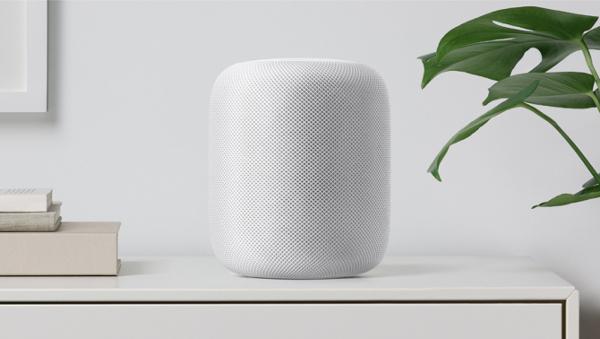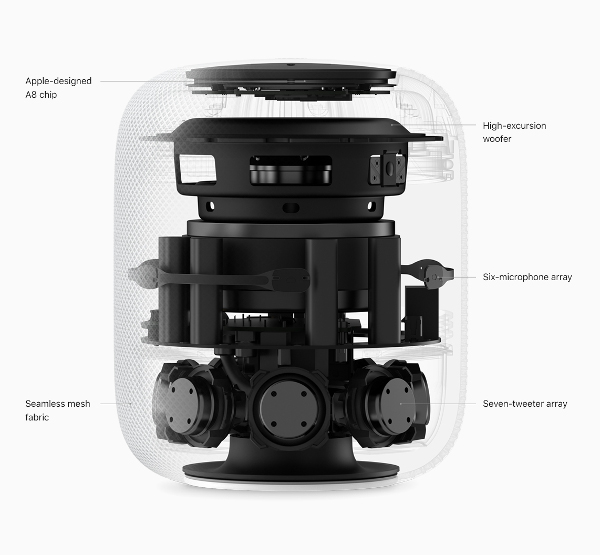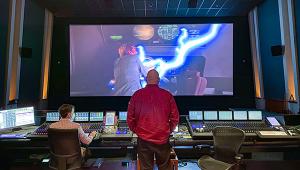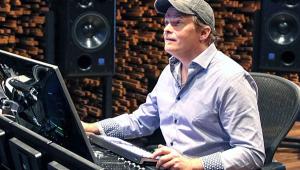Make Room for HomePod

When Amazon introduced Echo in November 2014 we didn’t know quite what to make of it. A voice-controlled speaker from Amazon? Of course, with its new Alexa voice service on board it was more than just a speaker — it was, as Amazon put it, a “new category of device.” That category, which has come to be known as smart speakers, has exploded, attracting the likes of Google, Sonos, Harman (now owned by Samsung), and most recently Apple. While Amazon is still the undisputed king of the category it invented — owning 70-plus percent of the market and offering a full line of products — will it be able to hold onto that lead as competition heats up? When Apple announced in June its intention to deliver the HomePod by the end of the year, we were intrigued if not a bit puzzled over what took them so long to enter a market headed for billions of dollars in sales. To learn more about the HomePod, which begins shipping February 9 at the premium price of $350, we reached out to Phil Schiller, Apple’s senior vice president of worldwide marketing.
![]() S&V: Why HomePod? Why now?
S&V: Why HomePod? Why now?
Phil Schiller: We have an incredible team of audio engineers and scientists that are creating innovative new audio products — from the quad-speaker audio system in iPad Pro, to the magical AirPods — I think we have the knowledge and technology to deliver something special in the home. We’ve also been building Apple Music into a great service and bringing more intelligence to Siri to help you discover new music based on your tastes and preferences. All of this work comes together in HomePod so we can deliver an amazing music experience in your home.
HomePod is the result of recent advances in some pretty cool technology. We’ve applied machine learning so that HomePod can sense the environment it's in and sound great wherever it’s placed. We use our A8 chip to run advanced software on the device for real-time acoustic modeling, audio beam-forming, echo cancellation, and more. And while speaker arrays have been around for some time, we’ve advanced the thinking of what you can do with them to create a wide soundstage. We’ve also advanced Siri, making it faster and more reliable, and capable of listening for triggers like "Hey Siri" from afar even while loud music is playing.
S&V: Let’s step back and look at the big picture for a moment. Gartner predicts 75 percent of U.S. households will have at least one smart speaker by 2020. What’s Apple’s take on the category? Where do you see it going?
Schiller: No one knows exactly what the future will bring but as [personal computing pioneer] Alan Kay famously said, “The best way to predict the future is to invent it.” We think we can create a new kind of music experience in the home that sounds incredible, and is fun to interact with. That’s what’s driving us with HomePod. And it can also be the hub for your smart home. Voice technologies like Siri are also gaining in popularity with Siri responding to over 2 billion requests each week. This helps us understand how people actually interact with their devices, what they ask, and helps us create a product for the home that makes sense. We don’t think it’s just about HomePod though, or any one product, it’s about creating an experience that moves with you throughout the day — so the experience you have at home, is replicated in the car with CarPlay, at work with iPad and Mac, and when you’re out for a run with Watch and iPhone. You can listen to the same music, control your home accessories or ask Siri to do something for you, wherever you are.

S&V: At the June launch event you opened with the statement that HomePod is going to reinvent music in our homes. How? More specifically, how is HomePod different than smart speakers from Amazon, Google, and others?
Schiller: When we set out to design HomePod, we knew we wanted to create a great music experience in the home. An intelligent speaker that is easy to set up and use, automatically adapts to its environment, and sounds amazing wherever you place it [a feature Apple calls spatial awareness.] We also want you to enjoy music throughout the house, so HomePod will support AirPlay 2 and multiroom audio, and with Apple Music and the ecosystem of all the other Apple products you use, we’re reinventing music in the home. And with advancements in Siri, and deep knowledge of your music preferences and tastes, HomePod understands what you want to listen to, when all you say is, "Hey Siri, play some music."
S&V: Let's look at the technology: How do you achieve “spatial awareness” and how does the speaker create a soundstage from such a small footprint (5.6 inches in diameter)?
Schiller: We wanted to make a speaker that sounds great no matter where you put it in your home. From the moment you plug in HomePod and start listening to music, it automatically and instantly senses its location in the room to take full advantage of the environment it’s in. The microphone array in HomePod listens to the reflection of the music off neighboring surfaces, senses where the bookshelf is, or if it’s in the corner of a room or against a wall, and then uses machine learning to understand what it’s hearing, interpret the sound, and adjust the audio. Using advanced software and the A8 chip, HomePod intelligently beams center vocals and direct energy away from the wall while reflecting the ambient reverb and back-up vocals against the wall for dispersion into the room. The end result is a wide soundstage with a feeling of spaciousness and depth. This entire process takes just seconds and it doesn’t stop with the initial setup. Every time you move HomePod, it uses the built-in accelerometer to detect a change in its location and continues to make sure the music sounds great and is consistent, wherever it’s placed. We’ve also done some great things to help minimize the audible side effects of compression artifacts by developing studio level dynamic processing to optimize for rich, clean bass even at loud volumes.





























































